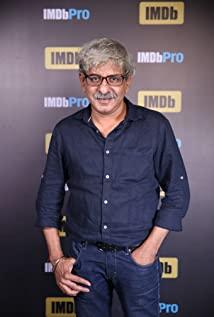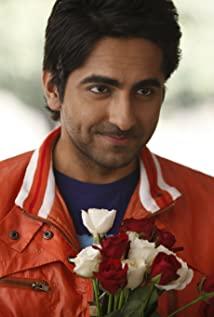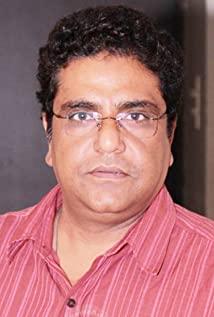In A Dream of Red Mansions, there is a couplet on the stone archway of the "Illusory Realm": "When the false is true, it is also false, and there is something inactive and there is nothing." "Invisible Melody" is a feature film that makes people exclaimed when watching the movie. It is precisely the back and forth between true and false, existence and non-existence, completing more than 50 large and small inversions, causing people to guess and think. Realistic characters, complex and time-varying characters, tight and rigorous plots, reasonable and subtle choreography... The analysis of this film review has everything you need
English Compilation | CheneySaid
Chinese original | Vegetable puree says
Friendly reminder | This article contains in-depth spoilers, please eat with caution
content
0. Four key details
Ⅰ. When the fake is the real, the real is also fake, there is no action and there is no
true and false blind
Is there something wrong?
Ⅱ. Character first, theme second
Rabbits are anxious to bite people, dogs are anxious to jump over walls. If people are not forced, how can they go to Liangshan?
Please don't try to test people's hearts, it will disappoint you
Good and evil, life and death, are tied to a single thought in the heart
Walking Sophie, constant hormones
Ⅲ. The "detail" of the play, the director
if... but...
play structure
Audio-visual language
Ⅳ. Write at the end
if you are a professional
If you are a general audience
if you are my acquaintance
After the death of the wife of the Mughal emperor Shah Jahan, he was so distressed that he ordered the best architects of the time to build a mausoleum for her. When the architect had an audience, the emperor asked him, "Are you married?"
"married."
The emperor asked again, "Do you love her?"
"Beyond all things, she is the light of my life," replied the architect
"Very well, then I order her to be executed so that you can feel my pain and build the most beautiful and luxurious mausoleum in the world for my wife."
The architect's wife was executed, and he reluctantly built this mausoleum, the Taj Mahal - the jewel of India.
The story is quoted from the French short film "The Tuner" of the same name. The tuner explained to the boss why he pretended to be blind and specially adapted the story of the construction of the Taj Mahal. In fact, he made up the plot of executing the architect's wife. Originally a talented pianist, he lost the game and was frustrated in love, so he put on custom contact lenses and pretended to be a blind tuner. Losing makes people more emotional, he admits. Losing sight makes hearing unparalleled; pretending to be blind, people will treat him with sympathy and kindness...
The first half of the Indian movie "The Tuner" uses a very similar setting, but it is by no means a simple remake, and the second half is a masterpiece. The whole film is a textbook classic in terms of characterization, thematic expression, the structure of the play, and the audio-visual language. For the title of this film, I personally think it is more appropriate to translate it into "Invisible Melody". First, it is more in line with Akash 's consistent identity as a pianist, rather than tuning the piano; second, the key plot A lot of the push is done through the melody of the piano.
There are a thousand Hamlets in a thousand people's eyes.
The many reversals in this film have led to different understandings of the plot and ending. In fact, opinions differ, and this film review is just an opinion. The title also has a similar expression:
What is life ?It depends on the liver.
The pun meaning of this sentence is not disputed and need not be repeated. But the most heated and divisive one was: Was the story Akash told Sophie a lie? Did Akash finally regain his sight? The clips of the hunter chasing the rabbit are at the beginning and end of the film. What is the director's intention in this arrangement?
According to the analysis, Akash did regain his understanding, and went to Europe with the help of the doctor Swami . "The bad girl Simi countered with Swami and tried to kill herself but was saved by the blind rabbit" is his fiction Fragments, as in the original short The Tuner tells the story of the construction of the Taj Mahal, the execution of the architect's wife is also fictitious. As for the arrangement of the opening and closing, it is a causal echo of each other, and it is a novel-style drama structure, which is described in detail in Part III.
"Four Key Details"
1. In Akash's fictional story, the blind rabbit hits the scarecrow, which is exactly the echo of Akash's escape from the killing of the bad cop Mach and hitting the electric pole.
2. Actor Plummer received a comment from Denmark under his movie, and his wife Simi responded, "Where is Hamlet's story?" "Hamlet" is quite familiar to everyone. It is one of Shakespeare's four tragedies. It was Hamlet's uncle Claudius who murdered Hamlet's father in order to usurp the throne. In the end, Hamlet was poisoned by his uncle but still succeeded in revenge. This implies that even though Akash was poisoned and blinded by Simi, he finally succeeded in taking revenge on Simi.
3. Akash and Swami were going to drive to Mumbai Airport. The car's rearview mirror was decorated with "Turkish blue eyes", which meant that evil spirits were used to control evil and bring good luck. It also implied that Simi would meet in the end. Liver was sold.
4. Still on the way to the airport, when Akash asked if his blood type was Rh negative for type B, Swami replied that it was from Lady Macbeth, referring to Simi. Lady Macbeth comes from one of the four major tragedies, "Macbeth". She is the culprit of the tragedy, vicious and cruel, and finally died tragically, suggesting that Simi will be taken out of the liver to die.
Now that Akash did regain his sight, did Sophie finally see it? This question is actually inaccurate. After watching the video of the boy Badu, Sophie always believed that Akash was not blind until the end of the film. In fact, after Akash was poisoned by Simi, Sophie never saw him again, and no one told him the truth. Sophie didn't know about the poisoned blindness, so she saw Akash in the bar and said the irony. if:
After listening to Akash's fictional story, the so-called moral high point "triple combo", but Sophie was angry that he was still pretending to be blind, and on the other hand, Akash still chose to forgive in the story she heard. Simi's confusion afterward was only due to Sophie's character.
Combined with other details in the film, the most rigorous and complete explanation is: Akash and Swami did arrive at Mumbai Airport, and Swami got the one million dollars and fulfilled the promise to Akash in the car to give paid him money "because Akash rescued him from the bad girl Simi". Akash's cornea transplant restored his vision, and he used the money to go to Europe, and his life returned to peace. He symbolized himself with a blind rabbit who was naturally forbidding and kind, and made a blind cane with a rabbit head. He continued to pretend to be a blind person to find inspiration for music. He completed the incomplete song and expressed his nostalgia for Sophie with lyrics. After singing in a bar, I met Sophie by chance. Disappointed and helpless, Akash let out a long sigh. Then there is the story of Akash trying to explore Fei's reaction with the story of the fictional blind rabbit...
Many film critics interpret the plot and dialogue of the encounter between Akash and Sophie at the end of the film , focusing on the moral aspect, discussing the brilliance and darkness of human nature, which is too much. I am more inclined to regard the end of the film as a love that seems to have a turning point but regrets the ending, because no one is willing to stand up first to restore the truth of the "Akash foot two boats" incident .
The second part of the "A 卡 什 foot two ship" case
The truth is always one
Summary of the incident : Akash and Sophie once loved each other deeply, but they were framed by Simi's black hand, so they had a conflict, and the love index plummeted. One shot away...
Ⅰ. When the fake is the real, the real is also fake, there is no action and there is no
I once experienced a dream, so I hid the real thing, and used the psychic to talk about the book "The Story of the Stone", so it was called "Zhen Shiyin" and so on.
1. True and false blind
"Blind in the Eyes"
From the very beginning of the film, the audience quietly throws a " Schrödinger's cat "-style question game: Is Akash blind or not? One shot makes you think Akash is blind, the next one makes you suspicious, and once you turn the mirror, the doubt begins to dissipate. For example, the director of the title shows a close-up of Akash's face when he is playing the piano, so that you can judge by his eyes that he is blind. After the performance, he looks to the left naturally like an ordinary person, but when the camera turns, he can judge the dial by touching it. time. Such details are too numerous to enumerate, it is useless to say more, you can brush it again and experience it yourself.
It wasn't until Simi poisoned and completely exposed Akash that he himself admitted that he had been pretending to be blind, but it was too late, and when he woke up and that he was truly blind, the film reached halftime.
After halftime, Akash remained blind on the screen.
Two years later, when the camera zoomed in on him and Sophie again, the director played the "guess the blind" game with the audience again, until the Akash god struck and the whole film ended.
So the first time I saw it, I felt that "Akash's Blindness" has two states on the eyes: indeterminate state, true blind state, and indeterminate state.
"mentally blind"
When you're blind, days and nights are the same.
This is Akash's self-report in the film. At first, you only think that this is talking about the visual day and night. After watching the whole film, you realize that it is alluding to the spiritual light and darkness. After witnessing Plummer's death, Akash sat on the street and thought about what to do. When Apo Shaku sold him a lottery ticket and others chose to ignore it, he kindly helped her sell one. Akash, who wanted to call the police later, found out that one of the suspects was actually a superintendent with a three-star police rank. How can ordinary people compete with India, a country with a rigid class and caste system, so he chose to hide the truth. Simi went to the restaurant that night, and in order not to involve Sophie in the incident, he left without saying goodbye. But then he saw Mrs. Disa being pushed downstairs by Simi, but he chose to turn a blind eye... Even though Akash did not uphold social justice, he was indeed kind-hearted. Whether he chose to be mentally blind, he had already drawn a standard in his heart. .
2. Is there something wrong?
"Are there ten million?"
In his testimony to the media after her husband's death, Simi said that Plummer took 10 million to go out to talk about business, and friends in the media believed it, and so did the public. Akash, who was taken to the abandoned hospital and almost had his kidney cut off, took the opportunity to assure the three of them that he could get 10 million more valuable than the kidney, and they believed it. Simi wanted to turn against Aposhaku, saying that there was no such 10 million, and even played the emotional card saying that she was a widow and her daughter was lonely at home.
"Is there Dr. Ambick?"
The three wanted to trick Akash into taking a kidney. In order to calm him down, they tricked his ophthalmologist, Ambick, to come over at seven o'clock in the evening. Akash believed. After planning how to extort 10 million from Maher, Akash asked Swami if Doctor Ambek really existed, Swami hesitated and said there were thousands of Ambek in Pune, and then Muli Da Lol... So, is there a doctor named Ambick?
"Is there that love?"
Sophie wasn't sure about whether Akash really loved her. When the two were drinking that night at Akash's house, Akash admitted that she was the inspiration for the music, and Sophie was so happy that she rolled the sheets that night. Later, Akash's sudden indifference escapes her, making her doubt the relationship. But Akash suddenly called her to come over one day. She still happily bought a coconut to find him, but found that he was a scumbag who cheated on her feelings. Later, when the TV reported on Simi's jumping into the river, Akash and Simi left together, and she was surprised to think that they had eloped. Until two years later, when she heard Akash's emotional singing and touching lyrics in a bar in Europe, she felt that Akash was in love with her, but found that he was pretending to be blind... All of this was like a fog shrouded in rope. In front of Fei, but in fact from God's perspective, Akash's love for Sophie has always been there.
Cao Xueqin borrowed the name "Zhen Shiyin" to imply that "A Dream of Red Mansions" concealed the true story, and the story was fictitious. In order to create the illusion that her husband was killed by others, Simi told the media that the ten million "made out of nothing"; Akash added a fictional story at the beginning, and told Sophie a lie; the director passed the exquisite script structure and The editing of the camera lens makes it difficult for us to distinguish between the true and the false of the plot. Sometimes the real is regarded as fake, and the fake even appears more real than the real; sometimes the fabricated "facts" even appear more real than the real ones. Somewhere and not.
Ⅱ. Character first, theme second
The plot of the film relies on the contradictions and conflicts between the characters to advance, and the theme is revealed through the characters' language, behavior and personality changes. The reason why "Invisible Melody" exploded in word of mouth stems from the fact that the screenwriter did not waste a character when revealing the theme; the director did not waste a shot when capturing the activities of the characters; the actors did not waste an action, expression or even a word when creating the character image . Everything is as it should be, and the most amazing part is the tentative dialogue between Akash and Sophie at the end of the credits .
After a long time, you are willing to look up, I am walking very slowly on the other side, and you are in a dilemma between reality and falsehood, waiting for my bravery
In addition to the two protagonists, there are many characters in the film who are directly involved in promoting the plot and expressing the theme. But it is not difficult to find that all characters have a characteristic: the characters are realistic and three-dimensional, and the characters are complex and time-varying . A pianist who is kind but not very righteous, puts more emphasis on artistic creation than the truth of the crime; Sophie, who is straightforward and affectionate, easily loses her rationality. Although she has sympathy, she needs more empathy; the vicious and vicious Simi is also soft-hearted. The policeman Maher, who holds power, is strong on the outside but cowardly on the inside; Apo Shaku, who is kind on the surface and fears the gods , is actually greedy for money; even the boy downstairs, Bado , is both snobby and naive...
1. Rabbits bite people, dogs jump over walls. If people are not forced, how can they go to Liangshan?
At the beginning, Akash would put his hands together in front of the temple and pray devoutly; seeing that Plummer died at home, his wife and lover were both suspected, he chose to call the police, just because the lover happened to be a police officer and gave up to protect himself. After Simi exposed the faking blindness, she asked Akash if anyone else knew about his faking blindness. Akash said: "I swear to the goddess Saraswati, no one knows". "Saraswati is a Hindu The one element of the Trinity Goddess Tridevi, which combines music, art and wisdom, is the creator, while the other two elements are the protector and the destroyer." Even if he was poisoned and blinded, he woke up like a kind-hearted rabbit. Take your passport and wallet and leave the place of right and wrong. But the rabbit was in a hurry and bit people. Akash, who was driven to a dead end, seemed to have turned into Shiva "Shiva" to kidnap Simi and blackmail Maher, but he was harmless and just wanted to scare them. Then take the money to cure the eyes. "Shiva is one of the three Hindu gods, the image is the destroyer, but the dual character of reproduction and destruction, creation and destruction".
In the beginning, although he was powerful and strong, he was afraid of his wife at home and his mistress outside. Knowing that Mrs. Disa was at Plummer's house on the day she witnessed the crime, Simi went to kill Mrs. Disa; and after Simi poisoned Akash, his first concern was whether he would lose his job. Under the stimulation of Simi, he chose to try to silence Akash like a "big man".
2. Don't tempt the heart, it will disappoint you
"Don't try to test people's hearts, you will know what "the end of the whole drama" is when you test it."
At the end of the film, Akash wanted to try to explore Fei's attitude after two years, and continued to pretend to be blind and make up stories, but he didn't expect Sophie to tell him with that serious and dignified expression that you should accept Simi's cornea. Cash felt despised and judged, so he left the scene in anger, the love line between the two was completely broken, and the whole drama ended.
"It's the same blind test, why is she even better?"
In the film, Simi and Maher respectively verify whether Akash is really blind. The plot is familiar to everyone, so I will only talk about the details. There is a detail worth noting in the segment of Simi's blindness test. Since it was the offering "Prasada, a Hindu religious offering" that poisoned him, what was the transparent liquid she poured into the Akash coffee afterwards? Personal opinion should be the antidote: if he is really blind, he will not see everything, and everyone will be fine after drinking coffee; if he is pretending to be blind, he must think that I have poisoned the coffee, and will definitely not drink the coffee , the fact that he is pretending to be blind is obvious.
3. The life and death of good and evil are tied to a single thought in the heart
As an Indian film, "Invisible Melody" has a particularly strong Hindu religious culture and customs. Most of the characters are Hindu believers: Akash, Simi, Mulli, Shaku and Maher's wife. An important feature of Hinduism is the promotion of caste system, karma and reincarnation, and believes that life is a cycle with no beginning and no end. In addition, Hinduism also has a strong closed religious characteristics, and it is inevitable to conflict with other religions. Many contradictions in the film are the epitome of this religious conflict, and most of them are shown in detail, which is detailed in Part III.
"Two important choices for the Akash"
To be or not to be, that's a question.
He has two choices, which directly determine the life and death of many characters. The first time was to sign a confession at the police station. The director subtly presented Akash's desire to reveal the truth first, making us think that Akash chose justice, but when the camera turned, he kept silent and ignored the truth. , the plot is reversed 360°. On the second night when he successfully kidnapped Simi and intended to blackmail Maher, he sat on the hospital bed tossing coins, as if he was listening to the will of the gods if he really wanted to kidnap and blackmail, when the lyrics sang:
"The irony of life and death in the film"
The cycle of life and death continues. We will live, they will die.
Life and death go round and round. We live, they die.
Madam Disa, who believed that she could enjoy bliss in heaven after death, fell to the ground to her death; Murray, who lived by selling human organs, was advised by doctors to donate his organs after death; police officer Maher, who held a gun to preside over justice, was in the elevator. Li mistakenly killed himself with a gun; Simi, who lied about her husband's death with 10 million in business, was kidnapped because of that 10 million, and eventually lost her life "Mach's death was handled very skillfully by the director, only sound, no picture."
4. Walking Sophie, constant hormones
Sophie did not directly participate in the plot of murder, kidnapping, extortion, etc., so there is almost no role in the second half of the film, but this does not affect her contribution to the entire film. In my eyes, she is the character with the simplest character in the whole film - a straightforward, emotional, affectionate woman who dares to love and hate. When I met Akash for the first time, on the way to take him home, Akash didn't want to talk about blindness, but wanted to have fun, but she said, "You can't even rent rickshaws for the restaurant's tip income. rise". Later, Akash escaped from her inexplicably, and she found Akash, not wanting to be ambiguous:
This invisible tension doesn't suit me.
I break out in spots. I want to break out of this state.
When Akash called again, she still happily bought two coconuts to go to his house, and found that Akash was in two boats, extremely disappointed and angry, and even slapped the boy downstairs when he went downstairs, that night Akash called again, and she scolded him hysterically. Two years later, I met Akash and gathered all my feelings about the lyrics and songs I wrote, but I found that he was still pretending to be blind, so:
You are making a fool of people here too.
Another irony that hits the truth.
Ⅲ. The "detail" of the play, the director
"Akash played to the climax of the piano music, Sophie happened to walk into the bar", the first time I saw this, I thought the director was paying tribute to a drama musical. As you may guess, that's right, "La La Land". It was a chance encounter many years later. The male protagonist also played in the bar, and the female protagonist was also an audience member.
In the vast sea of people, we are all looking for another self, rather than looking for a perfect person.
"if"
"Invisible Melody" ends abruptly here, without Akash telling Sophie's memory later, then a typical love film undoubtedly "of course the scene of rabbit hunting in the title sequence should also be deleted", but the ending is also open , Whether the two finally come together is free to say. In this way, the main line of the plot is obvious: Akash pretended to be blind in the process of composing the piano song " Wo Ladki , the best sounding original sound of the movie, hereinafter referred to as W song, click to download". I met Sophie by chance. When I took him home and went upstairs, Sophie suddenly applauded and said that the W song was great, but he said that it was not finished yet. Sophie said frankly: Some things are incomplete, and incomplete is more meaningful. .
This sentence moved Akash and made him feel that he had found a confidant in life, so he showed a warm smile, which was the beginning of the main line of their love. And everything they experienced after that was a trial and test on their love road. Two years later they met in a bar on a European street corner, and Akash finished the W song with heartfelt lyrics to Love Sophie, who already had a new boyfriend...
"but"
However, the director used another clever way to deal with the structure of the film, adding the fictional story line of "hunter hunts down the blind rabbit", and the real Akash's story line, the seemingly parallel space, like two sides of a paper tape . The director cleverly connected the beginning and end of the film, and the plot looks like a " Mobius strip ", the two planes intersect and become a curved surface, just as the two stories form a closed loop due to each other's cause and effect "belonging to the structure of the film play. Fictional Structure in .
The following is an appreciation of the film from the perspective of the director. The screenwriter and director, who are responsible for the script and sound and picture respectively, are the bridge between the film and the audience.
Let’s talk about the best scene in the movie first. Many people think that it is the scene where Akash swings his stick and smashes the can. In fact, there is a more obscure scene before this, but it is more wonderful than this: Hearing Sophie’s righteous words , Akash left angrily, one second he was with her in the daytime street, the next second he was alone in the night square...
1. The structure of the play
The script is intrinsic to the film, and one of the important attributes is its structure. The structure of the play is the way to create the plot of the movie. There are three common structures in "Invisible Melody": dramatic, novel and prose. The dramatic structure is the most used.
"dramatic structure"
The venue situation is fixed , just as the actors perform in a fixed stage and situation, you will find that the development of the conflicting plot in this film is also very dependent on the fixed space situation. Couples' homes and abandoned hospitals.
The causal relationship is strong, and the dramatic structure attaches great importance to strong causality and emphasizes the integrity of the plot. There is a plot line with a beginning, development, climax and ending. Some plots are connected like a thunderbolt, which is why the film has been reversed more than 50 times. s reason. Cause and effect and conflict are obvious, so the plot is tense and powerful and interlocking. Akash wouldn't have been hit by Sophie on his bike pretending to be blind, nor would he have played Plummer at her restaurant, or played solo at his house if he hadn't been looking for inspiration for a piano competition in London. saw him die. If it wasn't for Plummer's whole body trying to get up to go to the bathroom, Akash wouldn't have seen the lover hiding there, and he wouldn't have found out that the superintendent was the lover when he called the police later. If it wasn't for sympathy for Dany's loss of her father, he wouldn't have gone to her house to teach her to practice the piano and witness Madame Disa being killed. If it wasn't for trying to scare Simi to give her a blood test, the doctor Swami would not have found out that her blood type was Rh negative for type B, and finally transplanted her liver...
"Prose Structure"
As for why the actor Plummer appeared in Sophie's restaurant and knew Akash, the director did not say clearly in the film, but it can be verified from the details. Mrs. Disa crossed at Plummer's funeral, a typical Catholic prayer gesture, and said that her husband and Plummer were very good friends, and said that they must be in bliss in heaven now, and Mrs. Disa The crosses hanging in the home all indicate Madame Disa and Plummer Catholics. Looking back at Sophie's father Frank , the cross hanging on his chest, notice that there is the corpse of Jesus on it, which is also a symbol of Catholicism. "The difference between Orthodox and Protestantism can be seen here. " Therefore, Plummer and Frank are very likely to know each other during worship and have a good relationship.
There are echoes of this kind, but there are many hidden details: Dany recognizes Akash when they meet, and hides the details of Plummer asking Sophie to take a photo of him and Akash, Swami and Akash. Akash said in the car that the Simi blood type test was to scare her, and this detail was exactly what Swami whispered to Akash... Prose-style structure is good at capturing seemingly scattered details, but it can be small See the big in the middle, the shape is scattered and the spirit gathers.
"Fictional Structure"
Novel-style structure The time-space structure is free, and flashbacks are often used . The director's application of this can be called the finishing touch of the film, which has been mentioned earlier.
2. Audiovisual language
For film, sound and picture are representational, and the medium of communication to the audience is audio-visual language, including shots, pictures, and sounds. Audio and video are the audience's most intuitive experience of the movie, so most audiences don't pay much attention to why the audio and video are arranged in this way. As everyone knows, the important role of the details of sound and painting: one is to strengthen the theme of the film; the other is to suggest the character and psychology of the characters; the third is to promote the development of the plot. The audio-visual creation of "Invisible Melody" can be regarded as exquisite. The following is an appreciation of the details and skills of audio-visual language.
"Lens and Screen"
close up
When the director stays on a shot for a long time, or the same angle appears multiple times, then you should pay attention, and the director should remind you that there is something here. For example, the first shot is Plummer's first appearance. There is an overhead shot at this position. He died within a few days. Later, at the same camera position and angle, Mrs. Disa fell to her death. It can be seen that The director's careful arrangement.
The first shot below is a close-up of Simi grinding hot sauce in the kitchen and then Plummer hugging her, full of blood red chili sauce, "Look at what you do" is Plummer's line, and later he died next to blood red Wine, what sarcastic lines and shots.
sight distance
Generally speaking, the director will avoid using long-distance framing in the mixed crowd, which will affect the main character's ability to control the field. But if a panorama is needed to introduce the background of the story, it can be solved by the actor moving quickly "closer to or away from the camera" regularly. For example, the following movie wants to explain that this is in Europe two years later. The director presents European-style buildings from a distance, and then pans to the square. Pedestrians walk in chaos and disorder. Only Sophie and her new boyfriend are moving towards the camera at a fixed speed and speed. Faster than the crowd, so it's easy to grab the audience's attention.
perspective
The vast majority of the film is shot from a third-person audience perspective, with the exception of a few shots, which are presented from Akash's first point of view. And it was Akash peeking at Sophie, who had been wearing contact lenses before and didn't see her face. This kind of perspective treatment reflects Akash's curiosity about Sophie's appearance.
mirror movement
Mirror movement, that is, the running form of the camera, can achieve different effects in combination with specific scenes and music, and many of them are used for plot reversal in this film. One of the two vertical camera angles must have a blind spot. At 00:34:07, Akash's performance suddenly went up a note, and then the two shots switched, and Plummer's body appeared, followed by an empty and terrifying sound . Equally exciting is the plot when Simi put on a skull face mask to test Akash's blindness. The sudden switch of the camera, combined with the terrifying ghost howls, sent chills down your spine.
Similarly, the two shots in the opposite direction also have blind spots. For example, when Mach is found hiding in the bathroom, the first shot is behind his back, but when the shot is turned, a strong man with a gun appears impressively, which makes people tremble.
Other forms of movement such as pushing, pulling, heeling, panning, rotating, and raising and lowering the lens are the basic operations of the film, and will not be repeated here.
montage
Montage is actually a splicing and editing that gives a special meaning to the space-time picture. It is usually accompanied by brisk music, which is used to pave the way for a fast narrative and save the time of the movie to present the main plot. For example, the first montage in the title introduces the law of Akash life. , and the second one introduces the reason for his blindness.
Color light and shadow
The important conflicts mentioned earlier are concentrated in the Akash's home, the Plummers' home and the abandoned hospital. The scenery of these three places has its own characteristics. Akash believes in Hinduism and is financially poor, so the home is configured for the middle and lower classes of traditional Indian society, with little decoration. The room is mild and monotonous, which echoes the character of Akash himself. In contrast, Plummer's home is decorated with sculptures, paintings, and all kinds of furniture. The wallpapers in different rooms have varied styles, bright colors and obvious contrasts, typical of modern European style.
An abandoned hospital where dirty acts such as organ stealing, kidnapping, and vendetta took place. The director skillfully used scattered light to illustrate the dusty, dark chaos here.
Styling clothing
The actor's style and costumes in the film are very in line with the characters' images. For example, Akash is a middle- and low-level Indian, so he wears traditional and simple clothes, and because he is a pianist, he will wear a suit when he plays; Sophie is in the play. The middle is a typical modern style of women, so unlike traditional Indian women such as Simi, Shaku and Maher's wife who wear sarees.
"sound"
The sound plays a supporting role in the plot of the movie, especially in this kind of drama with a lot of reversals. In addition to the actors' dubbing, the sound in the film is indispensable to the background music covering the whole film, as well as the interlude and theme music that highlight the main plot. "Invisible Melody" has put a lot of effort into the music. The Indian music online "MusicIndiaOnline" has the original soundtrack theme music of the movie , which can be enjoyed online.
Many Indian films that have exploded in word of mouth feature traditional Indian songs and dances, but this film has taken a different approach, with Western music as the main melody, interspersed with many traditional Indian songs. Music appreciation can be carried out separately, but here is just one example. The moment the elevator door opened, the first chapter of the Symphony of Fate, which Beethoven called "the knock on the door", played, and Madame Disa was pushed downstairs. When Beethoven composed this piece, he experienced the struggle of bad luck and uttered the cry of "I want to hold fate by the throat", but Akash pretended not to see it, turned around silently and rang the doorbell of Simi's house.
3. Other details
"coffee"
Coffee is one of the elements that runs through the entire film, as the plot develops. The first two sentences of the opening credits: Long story - coffee? Use flashbacks to echo the end of the film. Coffee and sandwiches are what Akash must order every time he goes to a fast food restaurant; the first time he saw Sophie, she invited him to drink coffee; the first time Sophie took him home, he asked if he wanted a cup of coffee; Before he blinded Akash, he made two cups of coffee...
"train"
The very distinctive Indian train appears frequently in the second half of the movie, five times in total, each time it appears with a flute and a plot reversal. It can be said that the train drives the development of all the plots that take place in the abandoned hospital, from kidnappings to murders. In addition, this is also a tribute to the animation of "Matchbox Pictures", one of the production companies that appeared in the title, the moving train.
"Realistic Irony Lines"
In addition to the classic sentences at the beginning of the first act, the lines and lyrics of many characters in the film are very realistic and ironic, and they are also very classic. " If you rewatch this film, you must use English subtitles! "
Though art gives artists a lot, it extracts a high price.
Art repays and demands from people
Enmity comes free. Friendship charges a fee.
Hatred does not need money, friendship needs to be recharged
What use is courage or a heart? The kidneys are the dearest part.
Braveheart is useless, two kidneys are the most expensive
Is it a heart or a black hole?
Is the heart a heaven or an abyss?
"Religion and Art"
Many religious elements are a feature of this film, the most important being Hinduism, followed by Catholicism, as mentioned in the previous article. There is also the appearance of Maitreya Maitreya of Chinese Buddhism. "Different from Hinduism, Buddhism emphasizes the equality of all living beings and takes the path of universality." When extorting a phone call from police officer Maher and his wife, Akash's self-proclaimed detective Ismail "Ismail" is actually the prophet of Islam, and Sheikh "Sheikh" who wants to spend $1 million in exchange for a Simi liver for his child It is the royal surname of the Arab Islamic aristocracy. Comparing the religious beliefs of the characters with the conflicts and contradictions in the film, you will find that these contradictions seem to point to religious conflicts, and the director has ulterior motives.
In terms of art , the choreographer has many details that pay tribute to well-known and old Indian artists, India's most successful and popular singer and composer Kishore Kumar "Kishore Kumar" and India's first superstar of Bollywood Raj · Kennan "Rajesh Khanna". In addition, there are two plays of Shakespeare and music of Beethoven. It is worth mentioning that the lives of these artists or the stories of the characters in their works have many correspondences with the main characters in this film.
Ⅳ. Write at the end
"If you are a professional"
I rarely perform in public, except for a special occasion or audience
The director is the creation of the film, and the film appreciation is the deconstruction of the film. Writing a movie review is one of the ways to deconstruct a movie, and at the same time it is a re-creation of the movie. I read an article before about how to appreciate a movie. It said that a movie needs to be read more than a dozen times. I also advised everyone not to watch movies with those who learned to write and direct, otherwise you will definitely collapse : the first time the main Controlling the screen, the second lighting, the third lens and distance, the fourth lens angle... It is not easy to write a good-looking movie review, and it is even more difficult to write a good movie review for different types of movies. . I am not a professional in art or directing, but I like to write, direct and appreciate movies, and I am still learning and progressing. This classic, which I just watched recently, gave me the urge to write a systematic and professional long review for it. If you have good suggestions for this article, please feel free to give me some advice. If you think it is good, your likes and forwards are the greatest support for me!
"If you are a general audience"
Being a truth-teller is the riskiest thing to do. Sometimes one has to choose to be silent, or be forced to be silent. Even if you dare not tell the truth to others, please never lie to yourself.
The reason why I feel that I have created this long review is in addition to the reason I like the film director and appreciation. The second is the book "Truth and Illusion" that I recently read, which quotes a British author. This book is a psychological reference book, which introduces many psychological investigations and strategies for understanding yourself. Many of the methods used to analyze the characters in the film are learned from this book on a psychological level: empathy analysis, confirmation bias, and the recency effect. The most important empathy analysis is to think in the first person from the perspective of each character one by one. "The difference between attention and compassion, compassion is from the standpoint of a third party, so it is easy to make moral judgments on the characters." Therefore, the opinions obtained are different from those of the mainstream. Novices are on the road and do not like to spray lightly. If you think it's good, your likes and forwards are the greatest support for me!
"If you were my acquaintance"
Your likes and retweets are the greatest support for me!
Forgot to delete this photo
View more about Andhadhun reviews











